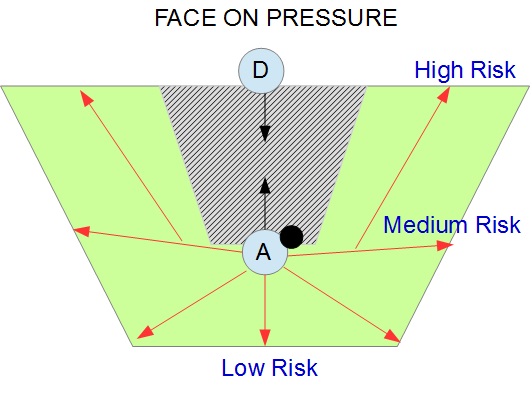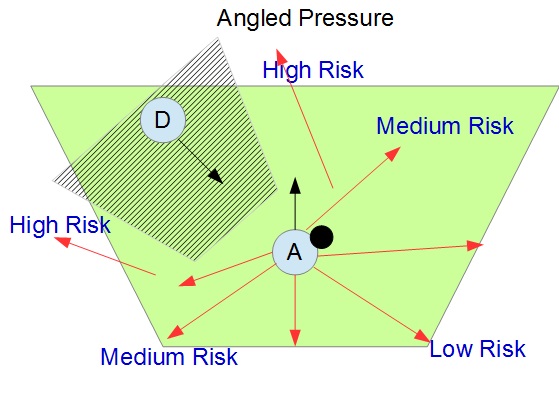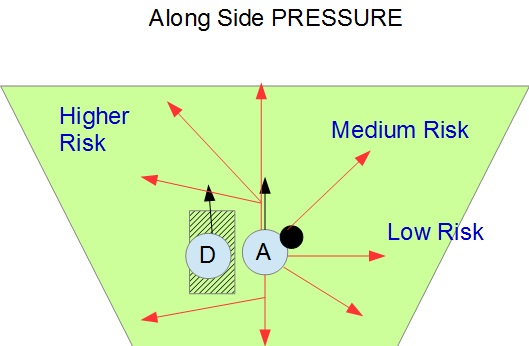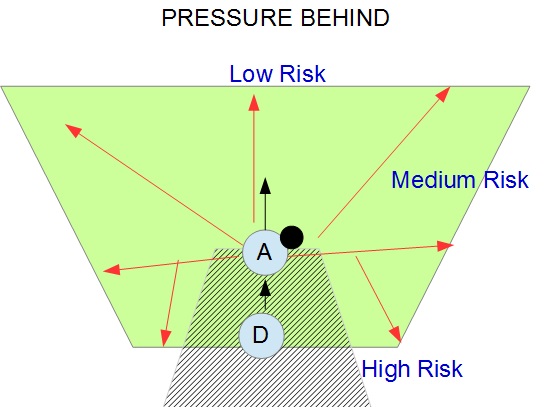Developing an Efficient and Effective Footwork System
Page 1
Developing an Efficient and Effective Footwork System
At TST, a huge part of the program is about the development of what we call Fundamental Footwork Patterns. Before looking at what these are, it is very important to understand what they do and why they are critical to player development.
The game isn't about footwork, it is about solving problems. Players can choose to solve these problems in whatever way they want. At team training, players will normally be allowed to create their own footwork patterns and use these to solve the problems they face, and for some players with a high degree of natural ability this is fine.
However most players are not blessed with a high level of naturally ability and as a result they develop inefficient and sometimes awkward ways to move the ball around their feet, and as these patterns develop and some self developed patterns become 'dominant' patterns, players begin to use (or the brains subconscious does) these dominant patterns regardless of whether this is best option of not.
As a result players start to develop 'bad habits' or develop weak areas in their technique, which are increasingly plastered over and compensated for, as players desperately try to come up with other ways to use what they are comfortable with to solve problem. Just look at what players do to avoid using their weaker foot (if they have never worked on their weak foot). Players can get by with this approach up to a certain level, but it will always be limiting at some point.
This applies to all techniques. You only need to look at the Australian national team to see this in action. The best players in Australia look awkward on the ball sometimes, and struggle in tight spaces to solve problems (get out of trouble or win 1v1 moment) at an individual level quickly and efficiently. To be honest its embarrassing. It happens because players in Australia are left to develop there own footwork patterns or don't develop the 'correct' (efficient and effective) patterns to a sufficiently advanced level and as a result the best players in Australia are relatively poor technically (when compared to players from other countries).
However what if there was a simple footwork system that stopped players reinventing the wheel but instead gave them simple, efficient and effective footwork that could be applied to almost all problems at at a indiviudal level.
However as mentioned above, the game is about solving problems, not footwork. Players need to recognize problems and have an understanding of how to solve them. This is all a good player should be thinking about when playing. They should not want to have to worry about how the feet are going to get the ball to where it needs to be. So developing a systematic footwork pattern to a highly advanced and instinctive level, which takes away the unnecessary burden of thinking about footwork. and takes away the risk of developing poor footwork patterns (that lack efficiency and effectiveness) allows players to truly play the game in a developmentally advance way - that is, playing with the head up and letting it be all about solving problems.
However, developing an advance footwork system takes a lot of practice and repetition. The patterns not only have to be practiced sufficiently to get them into the subconscious so that they are used automatically without conscious thought ; They also need to be practiced throughout the player developmental phase (any age up to 16) in order to develop the highly advanced neural pathways that are necessary for players to not only perform the patterns extremely quickly (with an incredible level of precision and touch), but also without thinking about doing them and without actually looking down (directly at the ball). A player feet become the players eyes. A player can feel the balls speed and direction, after a touch - the eyes stop being necessary during his process. Like a blind person reading braille or a typist not looking at the keys.
Getting players to this level is the ultimate goal of TST
***
When developing a footwork system it makes sense to start with the essence of the game ; Solving problems. To help this process consider what we call :
Pressure Problems
Pressure Problems are at the heart of the game at an individual level.
Whenever a player is on the ball (or about to receive it), one of the first things they need to be aware of is 'Where is the pressure coming from'? (Space and Options are the 2 other key things).
It is very important that Pressure Problems are understood as this helps explain why the Fundamental Footwork Patterns are so important to not only know about, but also to embed deeply in the sub-conscious.
What are basic Pressure Problems?
Description and explanation of the basic Pressure problems below
Pressure Problem
Expressed as a Picture
Video (tbc)
Face - On Pressure
In simple terms this is : The defender (pressure) and the attacker (player with the ball) are facing each other.
In the picture the black arrows show the direction players are facing. The red arrows show you where the attacker can take the ball.
If you assume the attacker ideally wants to get past the defender then this becomes a risk reward equation. Good players (Messi/Iniesat/Neymar) successfully go for the high risk high reward option and add huge value to a moment. Safe players may always go for the low risk option. (Just think of a player who always plays backwards). They don't loose possession but dont always add value to a moment - and that's ok as long as it is the right thing to do. Paul Scholes is quoted as saying he retired because he had lost the ability to play bravely and take risks.

Finally the high risk options never change in a pressure moment, but the reward is always dependent on what the players wants to achieve. So the high risk option might not always be accompanied with high reward. This where player intelligence comes in. Can players recognize where the high reward option is, and thereafter make a decision about whether it is worth the risk to get there.
Face - On Pressure
Angled Pressure
In simple terms this is : The defender (pressure) is approaching the attacker (player with the ball) to an angle, relative to the direction the attacker is facing.

Angled Pressure
Side On pressure
In simple terms this is : The defender is approaching the attacker from the side, relative to the direction the attacker is facing.
Side On pressure
Along Side pressure
In simple terms this is : The defender is running along side the attacker, relative to the direction the attacker is facing.

Along Side pressure
Pressure Behind
In simple terms this is : The defender is approaching the attacker from behind, relative to the direction the attacker is facing.

Pressure Behind
These are the simplest depictions of pressure problems.
There are few more but they will be looked at later.
From this you can see that a player must be very good at moving the ball around their feet. A player can go anywhere except through the defender (we ignore nutmegs as an option). And these problems will means that players :
- Sometimes move the ball out of the body to space
- Sometimes move the ball to beat a player (to a space or to get in behind)
- Sometimes will turn and sometimes will protect the ball
- Sometimes will use a little bit of deception.
- Sometimes will use the inside, the outside or the bottom of the feet or a combination of these
- Sometimes will take 1 step between touches, other times it will be none, and other times it will be 2 or more
With so many variable the obvious question is how do you get a footwork system out of all the above?
When a developing foot work system, you'd want something that allows a player to achieve all of the above efficiently and effectively, without being too simplistic (which creates then need for too much reinvention and improvisation) or too complicated (which takes too long to perfect and learn how to apply).
For every pressure problem moment in a game, you'd need a footwork pattern that quickly solves the problem. If each problem had its own footwork pattern then this would be too much to learn and practice. There would simply be too much to cover. Most team coaches look at footwork like this and so don't teach it or over simplify it, or others send players off in the wrong direction by making footwork all about 1v1 'tricks' that beat a player.
Fundamental Footwork Patterns (of which there are about 15 in total) can be used for all pressure problems.
And it is these 15 patterns which are at the heart of TST.
Using the FFPs, the process of developing good footwork in conjunction with solving problems (at an individual level) becomes achievable by all players - not just the highly gifted ones (who may get it naturally but even then often don't).
Most Australians, even the ones in the National team, do not acquired it naturally. In 2018 Mooy may be the only exception. He has very good fundamentals and you can tell by how he is on the ball. Rogic also has great technique, but it is clear he has trod his own path on the technical development journey and has done a very good job of it. However, players who came late to the national level (Leckie/Nabbout) have got there more for their physical attributes than as a result of highly developed technique. Imagine how good they would have been with an efficient and effective footwork system in combination to their physical advantages.
So you may think a particular child is a good player, but i guarantee their is huge room for improvement, no matter how good he or she appears right now.
****
The next page in this 'Fundamental Footwork Pattern (FFP) mini web-book' will look at pressure problems in more detail and start to link FFPs and Pressure problems together and show why the FFPs are a critical building block in the development of a good player.